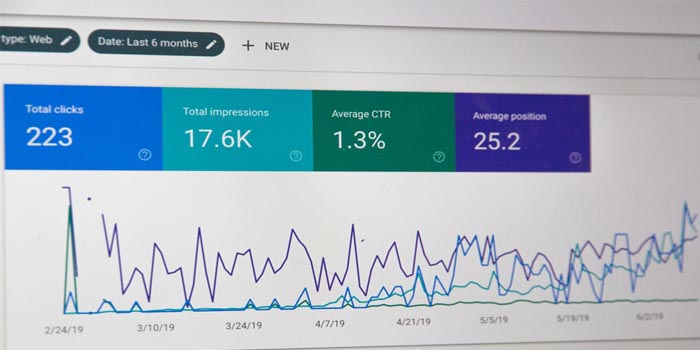Marketers today can learn a lot by going over the insights provided by Google Analytics. The insights will help you discover opportunities that you should utilize to optimize our website’s performance. This includes knowing your visitors’ interests and demographics to create targeted content that will get better visibility on search engines. The best SEO agencies use this tool as well to monitor their client’s campaigns continuously.
The insights range from conversion metrics to engagement metrics and more. Here are the top five useful SEO insights you can learn from Google Analytics.
Monitor Mobile Traffic
Mobile traffic has surpassed traffic from desktop computers. With that said, instead of monitoring your website’s mobile traffic, it is better to monitor the engagement levels of mobile visitors. Here is what you need to do to monitor mobile traffic:
- Monitor the mobile bounce rate – Look for pages with high mobile bounce rates and it will help you identify potential issues tied to a single page
- View the number of mobile conversions for individual pages by adding a mobile segment
- Compare the desktop and mobile bounce rate metrics, which will help you understand the differences between the desktop and mobile user experiences
You can connect your Google Analytics account with the Google Search Console and track the search queries sending you the most traffic. You will also get insights about the average click-through rate, the total number of impressions, clicks, and the average position.
Custom Segments
Google Analytics has had custom segments for a while now, and they allow you to see the traffic by channel, demographic data, visitors who completed goals, and more. Custom Segments can be made from any user data such as visitors from a specific location, visits to particular pages, average time on a page, and more.
Custom segments give insights about the users and how they engage with the website. One of the areas to explore when determining the additional segments you should consider is the Audience tab of Google Analytics.
In your Google Analytics account, go to Audience >Interests>Overview. The Overview section will display a more in-depth look at three interest reports, In-Market Segments, Affinity Categories, and Other Categories. To create a new segment; return to the Audience section and click on ‘Overview,’ to view the available sessions.
You can create the segment by selecting the ‘+Add Segment’ to monitor the behavior of the segment and the most frequent visitors compared to the rest of the website visitors. However, you will need to set a date range, preferably six months or more to have a good compilation of data.
Focus on Site Search
If you have a search bar on your website or blog, then it is an opportunity for you to learn about what visitors are interested in when they land on the website. You will gain insight into what they are searching for and how many users are using the search bar at any given time.
For instance, if a large percentage of your visitors are using the search bar, then it is an indication that the website has navigation issues. You could improve the user experience by making the content more accessible and clearer.
The search term used by the users could also give you direction when coming up with content ideas. If you do not have much content about a search topic, adding it will benefit you and the users. Moreover, if a user is frequently searching for a service or product on your website, you should think about adding it or featuring it more prominently on your website.
Google Analytics will also help you identify which piece of content is getting the most visits, the average duration on the page, and the bounce rates. This way, you can analyze and optimize the pages for better engagement. You could either add more CTAs or purchase links near the top of the page to boost conversion, among other strategies.
Use Conversions to Locate Top Performing Pages
By understanding the performance and conversions of individual pages, you could gain invaluable insights. In your Google Analytics, go to Behavior > Site Content > Landing Pages and modify the periods to compare the year-over-year or quarter-over-quarter metrics.
Look for any negative trends on individual pages, and if you see a decline, the issue could be isolated to the particular page. However, if the decline is across several pages, the chances are that you have to work on several technical issues on the website.
Moreover, if you are selling products or services, Google Analytics can help you in generating a sales report. It will have e-commerce metrics such as conversion rates, total revenue, top referral sources, top products, and more.
With the insights, you can see which of your channels is referring to the most traffic that converts and create strategies to increase it. Better yet, if you have a WordPress e-commerce site, you can easily integrate Google Analytics and view the crucial e-commerce data.
Look Into the Bounce Rates
The bounce rate refers to the users who visit your website but do not browse to other pages other than the landing page. A high bounce rate does not always mean that a website has a poor UI. However, it is an indication that users did not find the answers to their queries.
Moreover, if you are ranking for a niche term or a long-tail keyword, the user will leave or ‘bounce’ especially if the content does not answer their query. With that said, poor UX/UI and website design will also contribute to a high bounce rate.
For starters, adjust the time frame in your Google Analytics account and assess the metrics quarter-over-quarter to determine whether the bounce rate has increased or decreased. In case it has increased, you will have to update several aspects of the site.
Conclusion: Google Analytics is a free tool, and when used to its full potential, it could provide valuable marketing insights. You can use the insights to formulate better SEO strategies. These are some of the useful SEO insights you can tap into using Google Analytics.




